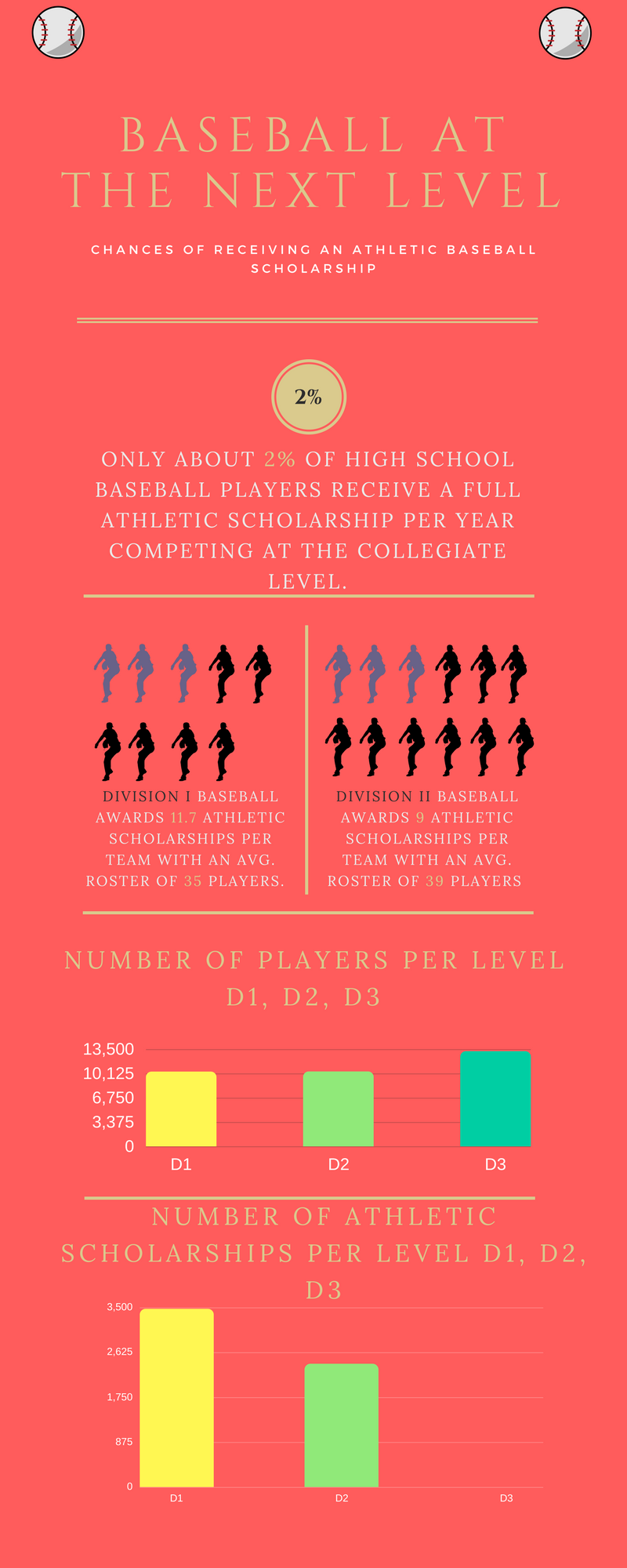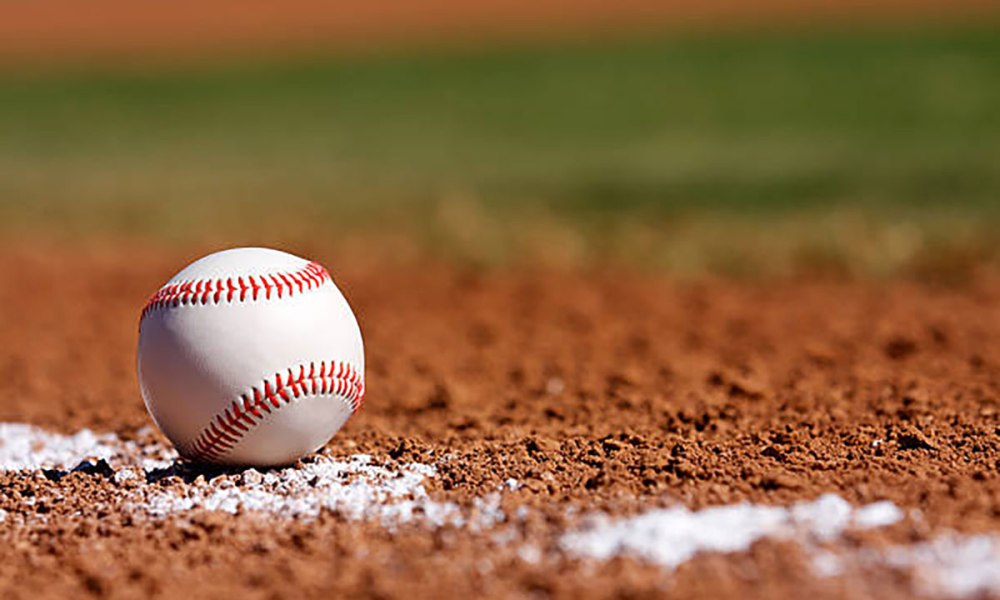Baseball at the Next Level

http://www.scholarshipstats.com/baseball.html
Physical features
| Avg. Height | Avg. Weight | Avg. Arm Strength | |
| NCAA D1 | 6’1 above | 180 lbs above | 90pmh + |
| NCAA D2 | 6’0 above | 170 lbs above | 80 mph + |
| NCAA D2 | 5’8 above | 150 lbs above | 70 mph + |
http://www.ncsasports.org/blog/wp-content/uploads/2010/06/SportsSpecificRecruitingGuide1.pdf
The Data presented is relevant to my professional portfolio as a Varsity Baseball coach and helps me developed my coaching philosophy when approaching an athletic who has the desire to play at the next level. I used a Microsoft table to showcase the data as some of the quantitative data are based on averages that are specific to both physical features as well school numbers. A pie chart and a bar-o-graph would not have represented the data as accurately as the Microsoft table. When developing and preparing athletes to play beyond high school, as a Coach it is important to help players establish and accomplish goals throughout their high school career. One main goal that all high school baseball player may have in common is to play baseball at the colligate level whether that be NCAA Division 1- Division 3. Athletic ability lays the grounds on whether a player is D1, D2, or D3 as far as the success level they may perform at. There is a great difference in physical feature of a D1 and D2 athletes compared to that of a D3 player (NCSA, pg.2). Along with physical ability college recruit look for academic achievement when evaluating a player and deciding to offer an athletic scholarship. At the Division 1 there are a total of 297 schools with and average roster of 35 players with roughly 11.7 scholarships to offer to the team (O’Rourke). If we do the math there is a little over 3,000 scholarships offered at the Division 1 level with there being about 10,000 players that meet the criteria of playing at the highest level in college baseball. In other words there is a third of Division 1 baseball player on scholarship whether that be full or fractional (partial scholarship).
Looking at Division 2 despite little to no difference in athletic ability when compared to Division 1, the numbers are somewhat similar to Division 1 when it comes to athletic scholarship, but with slightly less opportunity. Crunching the Numbers at the Division 2 level out of 267 schools there are a little over 2,000 scholarships offered to a athletic body of about 10,000 players (O’Rourke). This mean there is about 23 percent of Division 2 players who receive athletic scholarship which is less than a fourth that play. When we look at the Division 3 level both athletic ability and scholarship opportunity various greatly. The NCAA rules does not allow Division 3 player to be offered athletic scholarship, but all players are offered academic scholarship to accommodate for the cost of tuition (O’Rourke). Looking at the numbers at the Division 3 level there are 389 schools with over 13,000 players, which none are offered athletic scholarships.
This information is critical when developing players to play baseball at the colligate level. Along with developing the physical traits needed to play at each level; players are required to obtain academic standards in order to maximize their chances of playing colligate ball and being rewarded with scholarship opportunity. In conclusion, coaches and players should develop academic achievement as well as establish high academic goals in order to assist in building an impressive recruiting portfolio.
O’Rourke, Patrick. Play Your Sport In College, Scholarship Stats.com. Washington State University. 2014.Electronic
NCSA. NCSA Athletic Recruiting: Sports Specific Recruiting Guide. Next College Student Athlete.2017.Electronic
